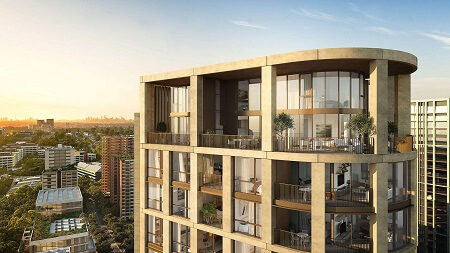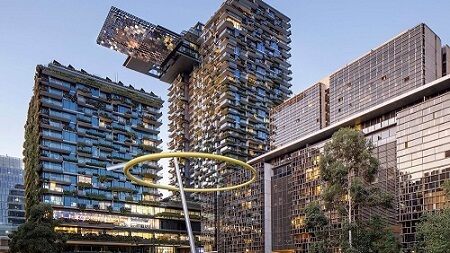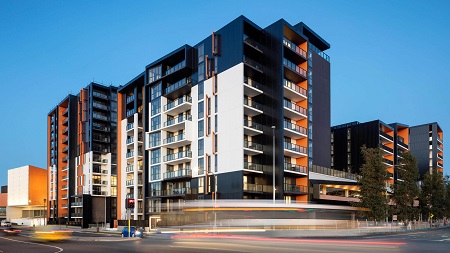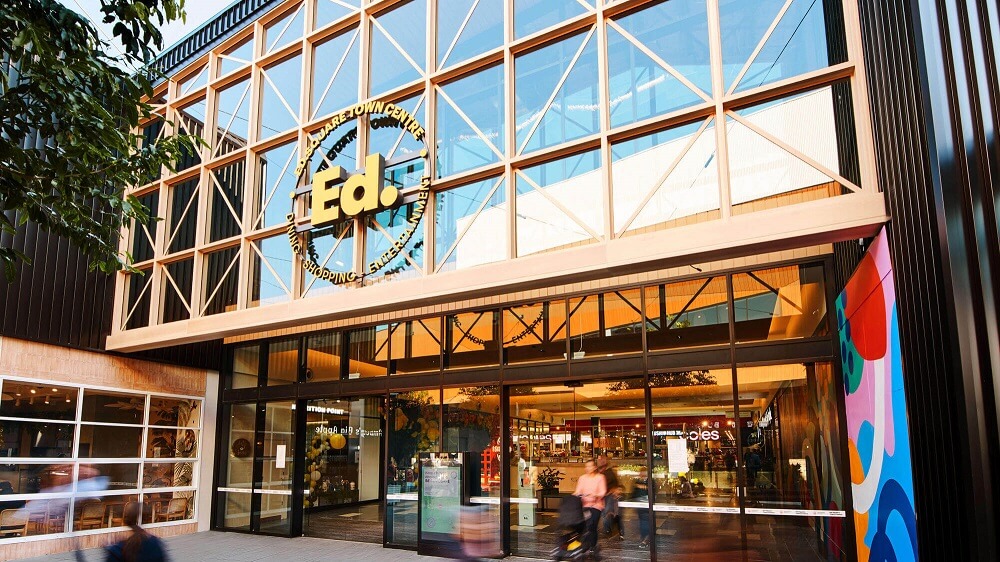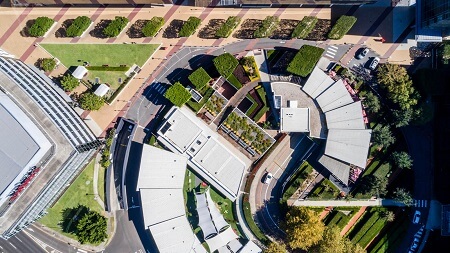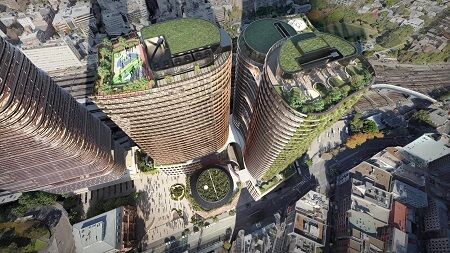The force that has influenced 100 years of Australian homes
For Australians, the dream to own a home is deeply embedded in the national psyche – and as our idea of home has shifted over the decades, so too have the country’s developments.
As suburbs and towns grew, developers became more aware of the changing needs of communities, and the savvy ones were always looking ahead to what was next.
For almost a century, Australian property has been enriched by the influence of visionary developer Thomas Michael Burke.
His entrepreneurial journey began in 1924 and grew into the real estate powerhouse known today as Frasers Property Australia – overcoming hurdles across 100 years to flourish in the face of change.
Exploring this evolution offers insights into the past and present, plus a peek at possible futures for Australian housing.
Here’s the history of Frasers Property Australia at a glance.
Early years: 1920s to 1940s
Born in 1870, Burke worked as a railway clerk before founding the Civil Services Co-Operative Society store on Melbourne’s Flinders Street in 1903, as well as outposts in the suburbs and rural Victoria.
A savvy businessman with a philanthropic heart, Burke purchased and subdivided land during the war years – then offered returning veterans the chance to buy property with a small deposit, spearheading the “8d. a day” home ownership drive.
In 1924, T.M. Burke Pty Ltd was born. Company offices spread across the ever-expanding country. Embracing small and large real estate projects, the business survived the Depression era with Burke’s forward-thinking nous, pre-empting the real estate needs of everyday Australians.
He also recognised the potential of the Sunshine Coast. For almost half a century, the company was involved in various aspects of the region’s development, from infrastructure projects to the growth of Peregian and Sunshine Beach.
Burke prioritised infrastructure access and promoted suburban life by celebrating nature and innovative design. A prime example is the masterplanned Melbourne development Merrivale Garden Suburb (now known as Reservoir) in the early 1920s, which was the first in Australia to emphasise green space, recreation and walkability.
1950s to 1980s
When Burke passed away in 1949, his son Marcus Burke progressively sold the company to Hooker Corporation, the development arm of L.J. Hooker.
From the close of sale in the 1960s through to the company’s restructuring in the 1980s, Hooker Corporation became one of Australia’s most dominant and prolific property developers, particularly on the Gold Coast and in Sydney’s northern and southern suburbs.
Significant developments across NSW in Killarney, Castle Cove, Cherrybrook, Winston Hills, Kogarah and Maroubra, had a transformative effect on everyday living, showcasing the company’s scope and ambition for community improvement.
The Centenary Suburbs in Brisbane became one of their standout achievements – planning and delivering a seven-suburb “developer’s dream”, launched through the 1960s and 1970s, which created housing for tens of thousands of Australian families.
Hooker Corporation also excelled at popular commercial, retail and industrial developments, with iconic projects in most of Australia’s capital cities, including Sydney’s Warringah Mall and Pacific Fair on the Gold Coast.
Following the 1980s stock market crash, Hooker Corporation restructured to survive the fallout. To ensure completion of projects in progress, a bank consortium refinanced land, housing and apartment divisions.
This paved the way for Australian Housing and Land, which became Australand – the start of a new chapter in the developer’s history.
1990s to 2010s
Under the experienced leadership of Managing Director Brendan Crotty, Australand soon flourished. By the end of the 20th century, a long list of quality residential, commercial and industrial developments demonstrated the company’s capacity for quality.
Australand understood the power of community and the importance of sustainability, bringing innovation and a multi-generational vision to many precincts around Australia.
Some of their memorable projects from this period include Watervale in Melbourne, The Maltings in Perth, Runaway Cove on the Gold Coast, Westlake in Brisbane, and the redevelopment of Sydney’s King Street Wharf.
Understanding the needs of Australian communities, Australand built a trusted reputation for creating large-scale, mixed-use projects and revitalising complex urban sites.
In 2001, Australand acquired the semi-industrial Queensbridge precinct to develop Freshwater Place on Melbourne’s Southbank. Decades later, the thriving hub is a vital link between the CBD and the city’s major arts and entertainment precincts.
In Sydney, Australand redeveloped sites that shaped the city’s skyline including Balmain Shores, Paddington Barracks, Henry Deane Place and Discovery Point. Australand also broke ground on Port Coogee in WA, south of Fremantle, and launched Shell Cove on the Illawarra Coast in NSW.
In a long-running joint venture with the NSW government’s land development agency Landcom, Australand masterplanned The Ponds in Sydney’s north-west – one of the most popular projects in the state’s history, with more than 4000 properties selling in seven years.
Over 25 years, Australand became one of the largest diversified property companies in the country.
In 2014, the company was bought by international powerhouse Frasers Property and merged with its local business – and Frasers Property Australia was born.
2014 to present
With a century of developing Australia’s towns and cities grounded by a clear vision, Frasers Property Australia is positioned to keep creating thriving neighbourhoods across the country.
A mission made easier with the backing of a $40 billion multinational brand active in more than 20 countries.
From Central Park Sydney, the country’s most awarded mixed-use community, to exclusive neighbourhood Hamilton Reach on Brisbane’s Northshore, Frasers Property Australia is able to take on complex challenges and create new opportunities in the housing market.
Other notable developments include Burwood Brickworks Shopping Centre in Melbourne, recognised for its industry-leading sustainability features, and the upcoming Central Place Sydney, set to be part of Sydney’s new Tech Central precinct which is currently in development.
The next 100 years
‘Tenacity’ is the defining word for the developer’s history: beginning with T.M. Burke driving the business through the Great Depression and World War II, and championing home ownership and community growth for everyday Australians.
Then Hooker Corporation, resolving to modernise suburbia and transform cities to meet the demand of a growing, diverse population.
Alongside commercial success, Australand took up the mantle of sustainability leadership, exploring and adopting more efficient ways of living, working with the largest portfolio of Green Star certified properties in Australia.
With a century of creating homes and communities for hundreds of thousands of Australian families, Frasers Property Australia is built on the ethos of making ‘welcoming places’.
Living and working well means a chance to thrive, with opportunities to enjoy social connection, natural beauty, and a sense of belonging.
Frasers Property Australia is set for another century of placemaking – with stronger, smarter, happier communities to benefit Australians both now and into the future.
Originally published as ‘The force that has influenced 100 years of Australian homes’.
See more articles on


